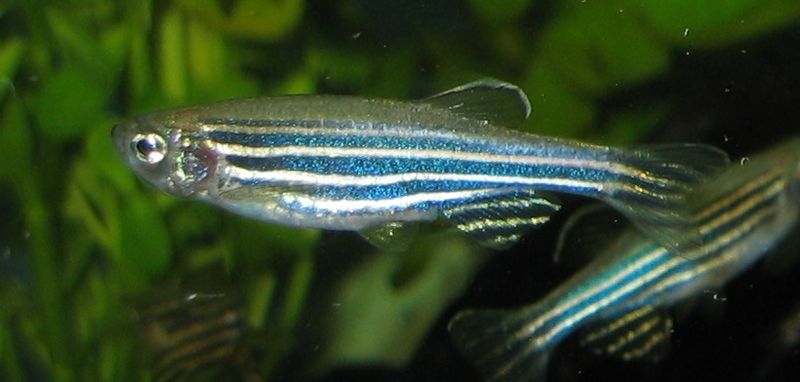CEH examines toxic effects from nanoparticles
While there are many studies about microparticles, there aren’t that many that have found nanoparticles and examined their potentially toxic effects. In a new study from the Center of Excellence Center for Evolutionary Hologenomics (CEH) at the University of Copenhagen, researchers, using zebrafish as a model, found that some of the potential consequences of exposure to nanoparticles are inflammation, disruption of metabolic processes, and lowered reproductive capability. The study has been published in the Journal of Hazardous Materials.

A new study with Associate Professor Morten Tønsberg Limborg, Ph.D. Fellow Eiríkur Andri Thormar, and research assistant Cecilie Grønlund Clausen from the Center of Excellence Center for Evolutionary Hologenomics (CEH) at the University of Copenhagen has examined the consequences of nanoparticles in zebrafish. Humans consume plastics daily, and these plastics are first broken down into microparticles and then nanoparticles. Researchers have taken a closer look at the short-term and long-term effects from being exposed to nanoparticles and found consequences such as inflammation, disruption of metabolic processes, and lowered reproductive capability. The study has been published in the Journal of Hazardous Materials.
“For the first time in a vertebrate animal, we have exposed zebrafish to nanoparticles in a relevant environment concentrated on a whole generation. We have examined both the short-term and long-term effects from having the nanoparticles in the zebrafish’s body. Nanoparticles are so small that they are absorbed into the cells. This means that nanoparticles have a completely different effect on the organism than the microparticles. There really is a need for more studies about nanoparticles,” said Associate Professor Louise von Gersdorff Jørgensen from the University of Copenhagen, who is last author on the study.
Affects fertility
Some of the short-term effects were studied through an image analysis in which the researchers looked at the immune system and metabolism, while the long-term effects were seen, among other things, in lowered fertility.
“More knowledge about this area is needed, so that we can better regulate in the areas of pollution and plastics, and also so that we can get an idea about what the consequences might actually be. It becomes a serious case when we see signs of reproduction being affected,” said Associate Professor Jørgensen.
Humans, like zebrafish, are of the vertebrate family. So this study presents a model of what potentially might happen to vertebrate animals when they are exposed to plastics.
Read the scientific article in the Journal of Hazardous Materials here
